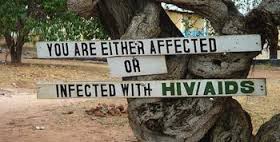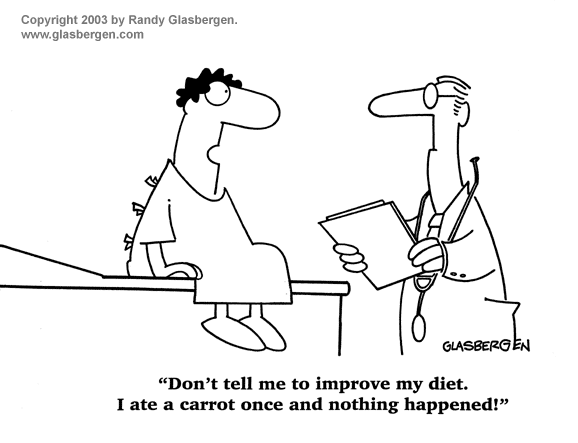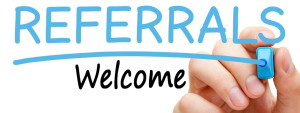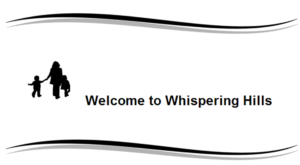
Nelson Mandela: They Just Don’t Make Them Like That Anymore
A Tribute to Nelson Mandela:
Last Thursday, Former South African president, Nelson Mandela took a bow and exited the earth stage leaving a grief stricken world united in anguish and sorrow. W.O.M.E.N joins our global family in mourning the passing of this truly unique and one-of-a-kind legend of our times. Nelson Mandela fought many wars including racial oppression. Perhaps though, the fight that he took on with an unprecedented and unabashed tenacity even as he grew frailer with advancing age; the fight that touched more lives all around the world than any other, was his war on AIDS and eliminating stigma.
In 2005, Nelson Mandela’s only surviving son, Makgatho Mandela, died of AIDS at the age of 54. Almost immediately, Mandela publicly announced this in a statement that not only sent shockwaves indeed, but also begun shattering the darkly tinted heavy glass of stigma, shame and silence that had encased the AIDS phenomenon in South Africa. He had learnt of his son’s HIV status barely six months ago.
“Today, a member of my family died because of AIDS”, he said and added, “I have been saying for more than three years that we should speak openly about HIV/AIDS and not hide it away. It is the only way in which it will become an ordinary disease – just like TB and just like cancer”. Mandela believed that “If we speak about it, people will stop thinking that it is something people will go to hell for and never see heaven”.
Yet Mandela’s fight against the social stigma surrounding HIV/AIDS did not begin on the day his son died. In 2002, he paid a very public visit to Zackie Achmat, an AIDS activist who had refused to take antiretroviral drugs until the government made them publicly available. Before that, a full five years before his son would die from AIDS related causes, Mandela attended a conference and the closing speech he delivered will forever remain monumental.
By 2000, South Africa had the world’s highest number of infected persons at a whopping 24%, nearly 4 million people, between the ages of 15-49. In July that year, at the 13th International AIDS Conference in Durban, the powerful words of Edwin Cameron, a judge with AIDS and Nkosi Johnson, an 11 year old boy who died two years later, painfully ravaged by the disease, broke the silence on HIV/AIDS and openly forced it into the national conversation. But it was Mandela’s closing speech at that conference that changed the AIDS agenda forever.
Nelson Mandela’s advocacy for AIDS became the most important work of his foundation, a charity he named 46664 after his Robben Island prison number. The charity has raised funds and awareness through huge international concerts at which some of the world’s biggest stars such as Beyoncé have performed. As he became more fragile, he turned down all public appearances and speaking engagements except those that had to do with AIDS.

Mandela used his influence on high profile celebrities to create HIV awareness through his 46664 HIV foundation
Mandela knew he had great stature in the world. He was aware that he evoked a sense of hero worship from the high and mighty to the meek and lowly throughout the world. He chose to use his far reaching influence to change the course of treatment, both socially and medically, for AIDS victims in his country and subsequently, the world over. In South Africa, and slowly around the world, social stigma on AIDS begun to suffer severe erosion, because Nelson Mandela stood up and spoke out.
Yes, Nelson Mandela was a great man, a saint that lived among us for too short a while and they just don’t make them like that anymore.
Adios, Madiba and fare thee well!

The Tree of Life Celebration – World AIDS Sunday at Metropolitan Interdenominational Church
W.O.M.E.N. took part in this past Sunday’s December 1st World AIDS Day events in which Rev. Edwin Sanders of Metropolitan Interdenominational Church, continued its tradition, now in its tenth year, of infusing the spirit of Christmas into its World AIDS Sunday Community Celebration service. The ceremony calls in part, for placing white ribbons for those who have died from AIDS-related complications and red for those living with HIV/AIDS, calling the names of each person represented by a ribbon, all on a tree fondly referred to as the “Tree of Life”.
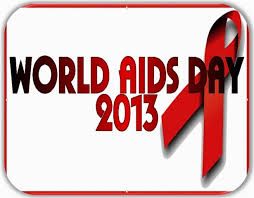
Celebrate World AIDS Day – December 1, 2013 With a Positive Action
HIV impacts all of us in one way or another. Here in the US, more than a million people are living with HIV. These people are all related to someone in one way or another: mother, sister, aunt, friend, cousin, brother, dad, uncle, etc. The federal theme for World AIDS Day 2013, Shared Responsibility- Strengthening Results For an AIDS-FREE Generation. We need to exert more pressure on ourselves, triple all our efforts, to ensure we completely eradicate HIV and AIDS.
And, yes, it can be done. Testing, of course, remains key. This is the first positive step that all of us can take. Get tested. Know your status. Remember, HIV does not discriminate across gender, race or age.
This is the first positive step that all of us can take. Get tested. Know your status. Remember, HIV does not discriminate across gender, race or age.
This is also in line with the general global theme, Getting To Zero, for the celebrations. Getting To Zero reflects the universal goal of achieving a new world status of zero new infections, zero new babies born with HIV and zero deaths resulting from HIV and AIDS related complications. It is probably not in doubt that we all share this desire but the only way to address it is by getting tested. 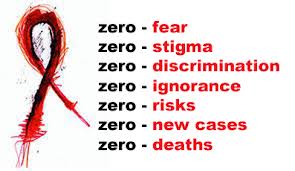 The good news is that when people test negative, they usually do everything they can to maintain that status. This protective behavior forms a large part of the shared responsibility towards a common goal of Getting to Zero.
The good news is that when people test negative, they usually do everything they can to maintain that status. This protective behavior forms a large part of the shared responsibility towards a common goal of Getting to Zero.
It therefore remains very important and cannot be over-emphasized: Get tested today.
W.O.M.E.N. provides HIV testing and counseling Monday through Friday from 9 a.m. to 5 p.m. Call 615-256-3882 to book your appointment today.

W.O.M.E.N. on a Journey – Fall/Winter (2013-2014) Newsletter
Happy Thanksgiving!
As always, it is a busy holiday season here at W.O.M.E.N. We are also gathering all the holiday news and views at W.O.M.E.N. ready to serve up a sumptuous newsletter for you soon. Remember to look out for our Fall/Winter newsletter in January 2014.
In the meantime, just in case you missed it, do take a moment to catch up on everything we have been up to this past quarter in the spring and summer months, by clicking on the link below:
Please click HERE to view our 2013 Spring/Summer Newsletter!

PREVENTIVE HEALTH
Preventive Health
Yes, most people will hardly find the need to go to the doctor unless they are truly sick. Obviously, illness may not be ignored. Yet, with the current skyrocketed healthcare costs and the decidedly reduced income levels of most households, who would pay for something they don’t “need”?
The fact is, however, you really do need it! Women, especially, are at significantly higher risk of developing most chronic diseases affecting our planet. These include Diabetes, Heart Disease and Stroke. Preventive health care can save lives. For example, women who undergo mammograms, screenings for cervical cancer among others, definitely have a better chance of latching onto early onset of disease. In many cases, this vastly improves their chances of better management and containment. In some instances, a complete cure may even be possible. Sadly, most women delay or avoid getting necessary care because of cost.  The irony is that preventive health care really does save lives.
The irony is that preventive health care really does save lives.
There are some things you can begin to do right now that don’t require medical assistance or knowledge. The World Research fund (http://www.wrf.org/preventive-healthcare/preventive-healthcare.php) lists four possible immediate steps you can embark on today towards good health practice:
- Don’t smoke or use other tobacco products; drink only in moderation (and red wine is the most acceptable use of alcohol
- Eat a proper balanced diet to get the correct amount of nutrients and calories daily
- Exercise at least three days per week; aerobic exercise will build muscle and endurance
- See your doctor regularly for checkups
As can be seen from the above, the most important part of preventive health care is maintaining good health habits. In addition to developing these habits, however, some screening services may prove worthwhile in either preventing or at least minimizing the effects of disease. Women, especially, should ensure they undergo the following, as regularly as required, for optimal health:
- Pap smear
- Breast self-examination
- Mammography
- Cholesterol screening
- Cervical cancer screening
- Lung cancer screening for smokers
- Abdominal aortic ultrasound
- Blood Pressure
- Blood Sugar
In addition, you should have a plan for getting professional care before the need arises as well as ensure your immunizations are up to date. This is a must for every member of your family.
Often early detection is the key to effective treatment. 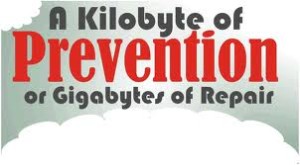 Some symptoms will require you to see your doctor immediately. These include a lump or persistent lesion on your body, a seemingly long lasting fever, persistent and chronic cough, unexplained weight loss and continued aches and pains.
Some symptoms will require you to see your doctor immediately. These include a lump or persistent lesion on your body, a seemingly long lasting fever, persistent and chronic cough, unexplained weight loss and continued aches and pains.
Preventive health is crucial, particularly for women. Protect yourself and your loved ones by taking action to prevent disease and poor health.

Nashville Based Author and CEO Featured in National Publication
|
|||||||||||||||||
|
|

Beating Type 2 Diabetes
Here at W.O.M.E.N. and across the nation, this November we once again turn our focus on Diabetes, a silent killer that continues to be one of the most pervasive diseases among African Americans in the United States. Diabetes is an endocrine disease that causes elevated blood sugar levels and is also popularly referred to as the “sugar” disease. It comes in two different packages, Type1 and Type 2 Diabetes. Most people are unaware of the distinctions between the two, and what you can do to prevent or manage the disease.
The prevalence of the disease is staggering. As statistics from the American Diabetes Association reveal, a whopping 18.7% of African Americans over the age of 20 have Diabetes. Further, according to the US Department of Health and Human Services, African Americans are 2.7 times more likely to be diagnosed with Diabetes and 2.2 times more likely to die from Diabetes than non-Hispanic White Americans. Further, Type 2 Diabetes is the most common type found in the United States and provides one of the biggest challenges facing African Americans today, particularly African American women. The US Office on Women’s Health, Womenshealth.gov, states that one in four African American women over the age of 55 has Type 2 Diabetes.
Type 1 Diabetes can occur at any age but is most commonly seen in children and young adults from infancy to the late 30s. In this type, a person’s pancreas produces little or no insulin. People with Type 1 Diabetes manage the disease by giving themselves insulin injections several times every day, or by having the insulin continually infused through a pump. While the causes of the disease are not yet entirely understood, scientists believe that both genetic factors and environmental triggers are involved. Type 2 Diabetes, on the other hand, typically develops after age 40 but can appear earlier, and has recently begun to be diagnosed with more frequency in children. In this form of diabetes, the pancreas still produces insulin, but it does not produce enough or the body is not able to use it effectively. Type 2 Diabetes often has no warning signs. You can have diabetes and not know it. A few common symptoms include excessive thirst and hunger, increased urination, blurred vision, slow healing wounds or sores, fatigue and irritability, frequent yeast infections, and tingling or numbness. Some people even experience weight loss.
While you can’t control some of the risk factors of Diabetes, such as age, race, and family history, there are steps you can take to prevent or delay the onset of Type 2 Diabetes. In the case of those already diagnosed, you can use some of these strategies to manage the disease and live a full and active life.
What are some of these steps?
– Regularly check your blood sugar, cholesterol levels and blood pressure.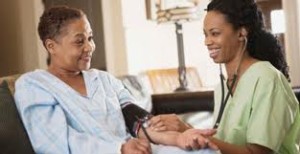
– Consult with your doctor frequently and talk about the disease in your family.
– Calculate your Body Mass Index (BMI) to see if you are at a healthy weight and then strive to achieve or maintain it.
– Eat low-fat, well balanced meals. “You are what you eat” is not an empty overused statement. It is a health fact. Your body will often reflect the contents of your diet.
– Make physical activity a habit. Join a gym; walk for 30-minutes; join a Zumba class; do some aerobic activities of varying intensity throughout the week. Exercise may be difficult in the beginning but soon your body will crave it and drive you to continue to exercise if you keep at it long enough.
– Limit alcohol to no more than one drink per day. You may even choose to eliminate it altogether.
Make a new commitment now to take back control of your life!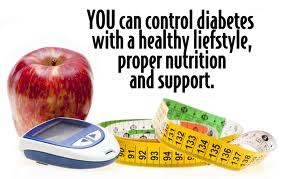
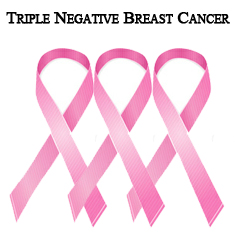
Understanding Triple Negative Breast Cancer
Did you know that there is not just one form of Breast Cancer? In fact, today, there are many different “subtypes” of Breast Cancer. These subtypes of Breast Cancer are generally diagnosed based upon the presence, or lack of, three “receptors” known to fuel most breast cancers: estrogen receptors, progesterone receptors and human epidermal growth factor receptor 2 (HER2). The most successful treatments for breast cancer target these receptors.
Unfortunately, when it comes Triple Negative Breast Cancer, none of these receptors are found in women who are diagnosed. In other words, According to the Triple Negative Breast Cancer Foundation, a triple negative breast cancer diagnosis means that the offending tumor is estrogen receptor-negative, progesterone receptor-negative and HER2-negative, thus giving rise to the name “triple negative breast cancer.” On a positive note, this type of breast cancer is typically responsive to chemotherapy. Because of its triple negative status, however, triple negative tumors generally do not respond to receptor targeted treatments. Depending on the stage of its diagnosis, triple negative breast cancer can be particularly aggressive, and more likely to recur than other subtypes of breast cancer.
Age, Race or Ethnicity: Several studies suggest that being pre- menopausal, African-American, Latina or Caribbean increases your risk of developing basal-like or triple-negative breast cancer. Among African-American women who develop breast cancer, there is an estimated 20 to 40 percent chance of the breast cancer being triple-negative. Researchers do not yet understand why premenopausal women and women in some ethnic groups have higher rates of triple- negative breast cancer than other groups of women.
Source: Guide to Understanding Triple Negative Breast Cancer
Researchers are still learning why some women are more likely than others to develop triple-negative breast cancer. Research supports a relationship between risk and your genes, age, race and ethnicity.
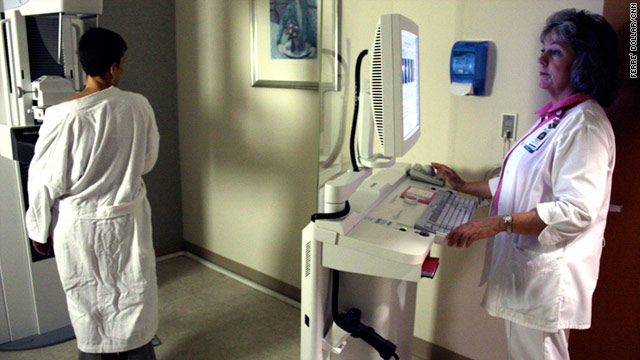
6 Things to Know about Mammograms
A mammogram is an important step in taking care of yourself and your breasts. The American Cancer Society recommends women age 40 and over get a mammogram every year, along with a breast exam by a doctor or nurse. Below are 7 things we think you should know before going for a mammogram to make the visit as comfortable as possible.
1. What is a mammogram?
A mammogram is an x-ray of the breast that’s used to find breast changes. The x-rays used for mammograms produce lower energy x-rays and expose the breast to much less radiation compared with those in the past.
2. Where do you get a mammogram?
Find a center in your area that specializes in mammograms. The US Food and Drug administration certifies mammogram facilities that meet high professional standards of quality and safety. Having all your mammograms at the same facility will make it easier for doctors to compare images from one year to the next.
3. When is the best time to schedule a mammogram?
The best time to schedule your mammogram is about one week after your menstrual period. Your breasts won’t be as tender or swollen, which means less discomfort for you.
4. What do I wear to a mammogram?
It is best to wear a two-piece outfit because you will need to remove your top and bra. Do not apply deodorant, antiperspirant, powder, lotion, or ointment on or around your chest on the day of your mammogram. These products can appear as white spots on the x-ray.
5. What to expect
The entire procedure takes about 20 minutes. The breast is compressed between two plastic plates for a few seconds while an x-ray is taken. It is repositioned (and compressed again) to take another view. There is no denying this process is uncomfortable, but it is necessary to get the clearest view.
6. Getting the results
You should get your results within 30 days of your mammogram. If you don’t, you should call your doctor to ask about your results. If the doctor finds something suspicious, you will likely be contacted within a week to take new pictures or get other tests. This does not mean you have Breast Cancer, it may be dense breast tissue or a cyst, or maybe that the image just isnt clear enough.

Breast Cancer: Myths & Facts
Between our peers, magazines, newspapers and the internet, we are flooded with information regarding Breast Cancer. Sometimes, it can be a bit overwhelming, but with the help of the National Breast Cancer Foundation, Inc., we thought it would be important to share some of the most common myths and facts regarding Breast Cancer.
Myth: Finding a lump in your breast means you have Breast Cancer
Fact: Only a small percentage of breast lumps turn out to be cancer. But if you discover a persistent lump in your breast or notice any changes in breast tissue, it should never be ignored. It is very important that you see a physician for a clinical breast exam. He or she may possibly order breast imaging studies to determine if this lump is of concern or not. Make sure to click HERE to see how to perform your own breast exam at home!
—————————————————————————————————————————————————————————————
Myth: A mammogram can cause breast cancer to spread
Fact: A mammogram currently remains the highest standard for the early detection of breast cancer. Breast compression while getting a mammogram cannot cause cancer to spread. According to the National Cancer Institute, “The benefits of mammography, however, nearly always outweigh the potential harm from the radiation exposure. Mammograms require very small doses of radiation. The risk of harm from this radiation exposure is extremely low.”
—————————————————————————————————————————————————————————————
Myth: If you have a family history of Breast Cancer, it is likely you will develop Breast Cancer
Fact: While women who have a family history of breast cancer are in a higher risk group, most women who have breast cancer have no family history. Statistically only about 10% of individuals diagnosed with breast cancer have a family history of this disease.
—————————————————————————————————————————————————————————————
Myth: Breast Cancer is contagious
Fact: You cannot catch breast cancer or transfer it to someone else’s body. Breast cancer is the result of uncontrolled cell growth of mutated cells that begin to spread into other tissues within the breast.
—————————————————————————————————————————————————————————————
Myth: Deodorant causes Breast Cancer
Fact: Researchers at the National Cancer Institute (NCI) are not aware of any conclusive evidence linking the use of underarm antiperspirants or deodorants and the subsequent development of breast cancer.
—————————————————————————————————————————————————————————————
REMEMBER: You know your body better than anyone else, if you feel something is not normal with your body, it is imperative to see your doctor as soon as you can.




